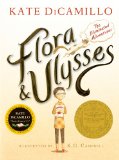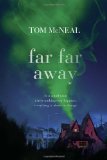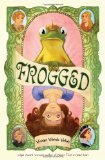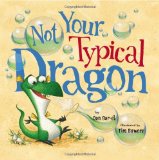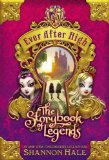Review of Flora and Ulysses, by Kate DiCamillo
The Illuminated Adventures
by Kate DiCamillo
illustrated by K. G. Campbell
Candlewick Press, 2013. 231 pages.
Starred Review
2014 Newbery Medal Winner
Flora is a girl who loves comic books. Her mother, a romance writer, wants Flora to “work to turn her face away from the idiotic high jinks of comics and toward the bright light of true literature.”
But because of Flora’s knowledge of comic books, she knows exactly what to do when she meets a superhero squirrel.
You see, their neighbor, Mrs. Tickham, was given a new Ulysses Super-Suction, Multi-Terrain 2000X vacuum cleaner for her birthday. When she tries it out, it accidentally sucks up everything in sight, including her book of poetry, and a squirrel.
Flora sees it happen from her bedroom window. She rushes down and shakes the squirrel out of the vacuum.
He didn’t look that great. He was missing a lot of fur. Vacuumed off, Flora assumed. His eyelids fluttered. His chest rose and fell and rose again. And then it stopped moving altogether.
Flora knelt. She put a finger on the squirrel’s chest.
At the back of each issue of The Illuminated Adventures of the Amazing Incandesto! there was a series of bonus comics. One of Flora’s very favorite bonus comics was entitled TERRIBLE THINGS CAN HAPPEN TO YOU! As a cynic, Flora found it wise to be prepared. Who knew what horrible, unpredictable thing would happen next?
Thanks to her reading, Flora is able to give the squirrel CPR and revive him. She names him Ulysses, after the vacuum cleaner.
His encounter with the vacuum cleaner has given him amazing superpowers. He is super strong. He can type. He can write poetry. And he can fly.
But all good superheroes have an arch-nemesis. In Ulysses case, that arch-nemesis is none other than Flora’s mother, who believes squirrels are filthy beasts and wants Flora to have nothing to do with him.
Can Flora and Ulysses overcome evil and save the day?
Various parts of this book, particularly the parts with Ulysses’ superpowers, are shown in comic panel form, which is appropriate to the story. All the characters they encounter are bizarre in at least one way or another, which is also appropriate to a story of a superhero squirrel. It all adds up to a fun and quirky story with a lot of heart.
Find this review on Sonderbooks at: www.sonderbooks.com/Childrens_Fiction/flora_and_ulysses.html
Disclosure: I am an Amazon Affiliate, and will earn a small percentage if you order a book on Amazon after clicking through from my site.
Source: This review is based on a library book from Fairfax County Public Library.
Disclaimer: I am a professional librarian, but I maintain my website and blogs on my own time. The views expressed are solely my own, and in no way represent the official views of my employer or of any committee or group of which I am part.
Please use the comments if you’ve read the book and want to discuss spoilers!
